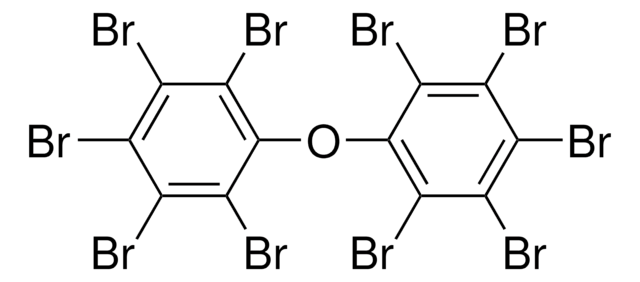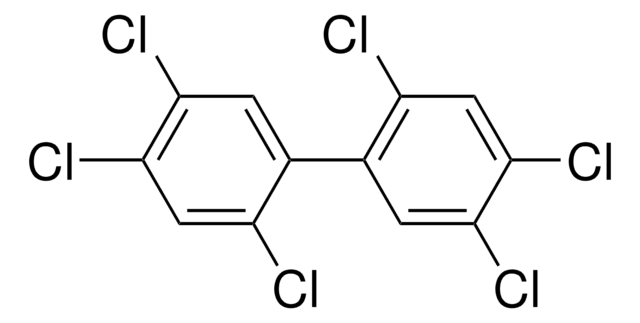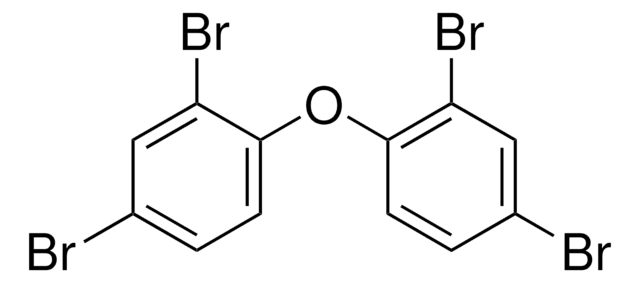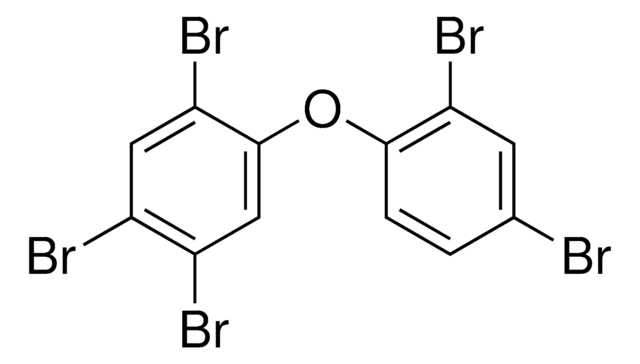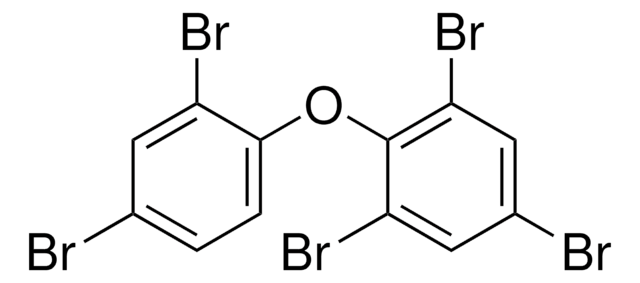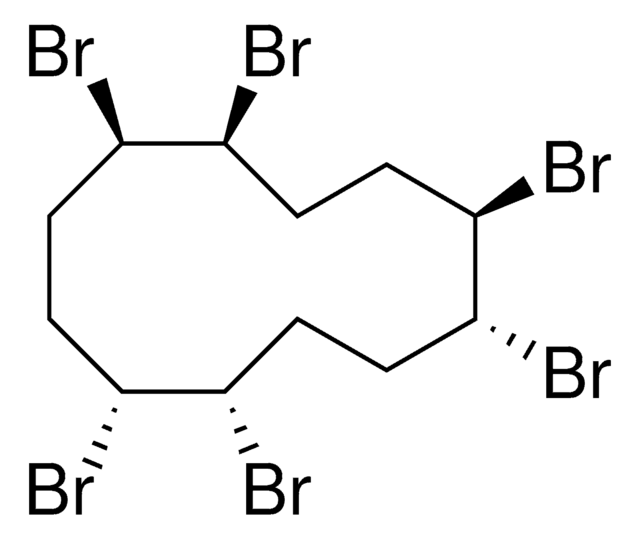91408
BDE No 37
analytical standard
Sinónimos:
3,4,4′-TriBDE, 3,4,4′-Tribromodiphenyl ether
About This Item
Productos recomendados
grado
analytical standard
Nivel de calidad
Ensayo
≥98.0% (GC)
caducidad
limited shelf life, expiry date on the label
mp
48-52 °C
Formato
neat
cadena SMILES
Brc1c(ccc(c1)Oc2ccc(cc2)Br)Br
InChI
1S/C12H7Br3O/c13-8-1-3-9(4-2-8)16-10-5-6-11(14)12(15)7-10/h1-7H
Clave InChI
YALAYFVVZFORPV-UHFFFAOYSA-N
Categorías relacionadas
Productos recomendados
Palabra de señalización
Danger
Frases de peligro
Consejos de prudencia
Clasificaciones de peligro
Aquatic Acute 1 - Aquatic Chronic 1 - Eye Dam. 1
Código de clase de almacenamiento
11 - Combustible Solids
Clase de riesgo para el agua (WGK)
WGK 3
Punto de inflamabilidad (°F)
Not applicable
Punto de inflamabilidad (°C)
Not applicable
Elija entre una de las versiones más recientes:
Certificados de análisis (COA)
¿No ve la versión correcta?
Si necesita una versión concreta, puede buscar un certificado específico por el número de lote.
¿Ya tiene este producto?
Encuentre la documentación para los productos que ha comprado recientemente en la Biblioteca de documentos.
Nuestro equipo de científicos tiene experiencia en todas las áreas de investigación: Ciencias de la vida, Ciencia de los materiales, Síntesis química, Cromatografía, Analítica y muchas otras.
Póngase en contacto con el Servicio técnico
